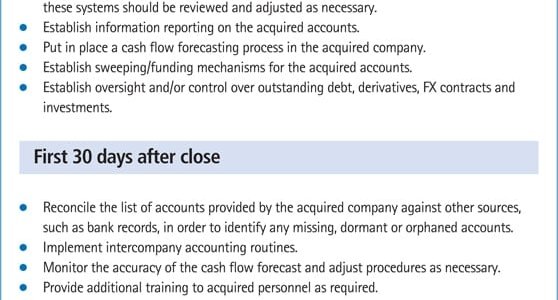by Chuck Colliton, Treasury Practitioner Executive, Global Business Solutions, and Dennis Sweeney, Treasury Solutions Executive, Bank of America Merrill Lynch
With the merger and acquisition (M&A) market showing a marked improvement in the early weeks of 2013, many companies are facing the challenges of combining the new companies. Beyond the basic requirements of aligning the new company’s cash management and systems infrastructure, what else will be required and how can treasurers add value to the integration process?
For many multinational corporations, growth can be achieved quickly through a stream of acquisitions, but cutting the deal is just the first step. Every acquired business has an existing infrastructure that must be integrated with that of the acquirer in order to maximise efficiency, visibility and control and minimise disruptions to the business.
Integrating the new company’s treasury functions into the organisation is often regarded as a straightforward exercise, albeit a demanding one, and includes combining general ledger systems, enterprise resource planning (ERP) systems or treasury management systems (TMS), as well as accounts payable and accounts receivable processes.
When it comes to M&A activity, there are two key areas where treasurers are typically involved and can add value: the mechanics of the deal itself and the subsequent integration process. However, every transaction is unique and how companies approach the integration process can vary. Where the target is bought by a dominant acquirer, the acquirer will typically integrate the new company onto its own platform. However, if the transaction is a merger of equals, the acquirer may choose to migrate to the acquired company’s platform if that system is considered superior to their own. For serial acquirers, the integration process can be particularly challenging as a new acquisition may be underway before the previous acquisition has been fully integrated.
Sign up for free to read the full article
Register Login with LinkedInAlready have an account?
Login
Download our Free Treasury App for mobile and tablet to read articles – no log in required.
Download Version Download Version
























